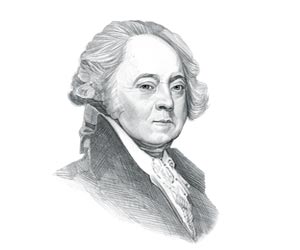|
The act of
setting free, or liberating a slave is referred to as Emancipation
Buying Freedom from Slavery: Emancipation
Sometimes it
was not necessary for slaves to undertake the long arduous task of
trying to buy their own freedom. Occasionally a slave owner would
free (emancipate) a slave on their own volition. A slave might by
freed by emancipation which meant their owner legally documented
that the slave had been given their freedom. The reasons a slave
owner would free a slave might be for loyal service, which was
usually given on the death of the owner as a provision in a will, or
as a result of war service (e.g. the War of Independence) or other
heroic acts. But the most common method of escaping a life of
bondage was buying freedom from slavery.
Buying Freedom from Slavery: How did slaves earn money?
The
main question that must be answered is how did slaves acquire or
earn money to buy their freedom? Slaves were not normally paid wages
for the work they did for owners and technically everything a slaved
owned belonged to owner. But in practice slaves were often allowed
to earn money 'on the side'. Slaves were a considerable investment
and the owner would fix the amount of revenue that each slave was
expected to bring in. Any small pittance earned above this amount
the slave was allowed to keep
-
By law and
custom, slaves were not required to work on Sunday. If a slave
chose to work for their owner or for someone else, they would be
paid
-
Bonus
Payments: Some slaves were paid paid a 'piece-rate' and earned a
bonus or "over-wages" for exceeding the quota, especially those
who worked in forestry and mining or in factories
-
Bonus
Payments: Some slaves working in agriculture were paid a bonus
during the harvest time when more work was required
-
Craftsmen:
Slaves that were skilled in a particular craft such as carpentry
or as blacksmiths were allowed to undertake jobs after they
finished their own work, and keep the money
-
Garden
Produce: Some slaves were given garden plots outside their
cabins and allowed to sell the produce they had grown
-
Leasing:
Slaves were often leased (rented) to 'hirers' under the
Hiring-out System and allowed to keep a small part of the
payment for their services
Buying Freedom from Slavery: The Hiring-out System
The
Hiring-out System was a common practice of Southern slave owners by
which they generated revenue from the labor of their slaves, rather
than taking the permanent option of selling them. It is estimated
that 5%-15% of the slave population was hired for outside work
every year. To put this into perspective, less than 4% of slaves
permanently exchanged hands each year. However, the Hiring-out
system provided an opportunity for a slave to earn a little money.
Slaves could also, by arrangement with their owners, also hire
themselves out. The largest portion of money earned via the
'Hiring-out system' went straight into the owner's pocket, but the
slave managed to keep some for themselves to put towards their
savings for buying freedom from slavery. The most famous example of
the 'Hiring-out system' is highlighted in the story of
'Uncle Tom's Cabin' by Harriet
Beecher Stowe in which Tom's wife goes to work for a baker in
order to raise the money to buy Uncle Tom back.
Buying Freedom from Slavery: Why did slave owners allow slaves earn
money?
The motives
and purpose of the slave owners who allowed their slaves to earn
some money was the notion that such rewards motivated and appeased
their slaves by encouraging the belief that slaves could eventually
save enough money to purchase their own freedom, and even that of
their families.
The
goal of buying freedom from slavery was a long, arduous task, taking
tremendous effort, hard work and determination.
The ability
of slaves to earn the money required to buy their freedom took many,
many years and required strict financial discipline.
Buying Freedom from Slavery: Slave Owners had the Right of Refusal
Even when
the slave had saved enough money to enable them to approach their
owner about the subject of buying freedom from slavery it was the
sole decision of the owner whether to allow this transaction. Such
requests to buy their freedom were refused by many owners, the most
famous example of this is highlighted in the story of the slave
called
Dred Scott.
Buying Freedom from Slavery for kids
The
history of the slavery of African and African-American people in
North America lasted for 157 years under the Colonial rule of the
English and a further 89 years under the rule of the United States
Government, a total of 246 years of slavery in North America which
had led to the establishment of the
Abolitionist Movement
and the
Civil War. Slavery was eventually abolished by the
13th Amendment that was passed by Congress on
January 31, 1865 and ratified on December 6, 1865.
Buying Freedom from Slavery - Racial Discrimination and Segregation
For additional facts about racial discrimination and segregation
refer to detailed information on
Black Segregation History
and for brief, fast facts refer to
the
Segregation History Timeline.
Black
History for kids: Important People and Events
For visitors interested in African American History
refer to
Black
History - People and Events.
A useful resource for
teachers, kids, schools and colleges undertaking
projects for the Black History Month. |

